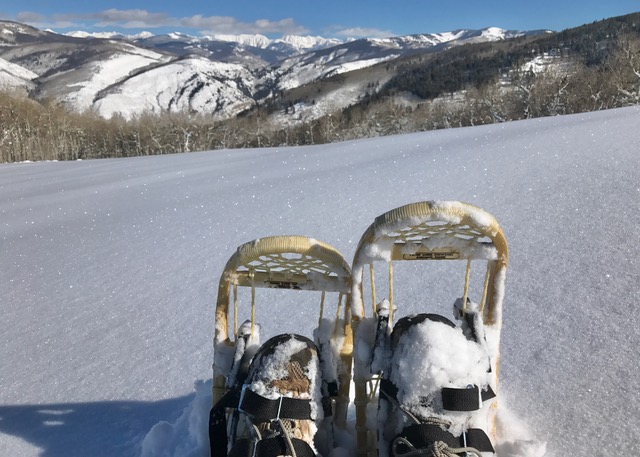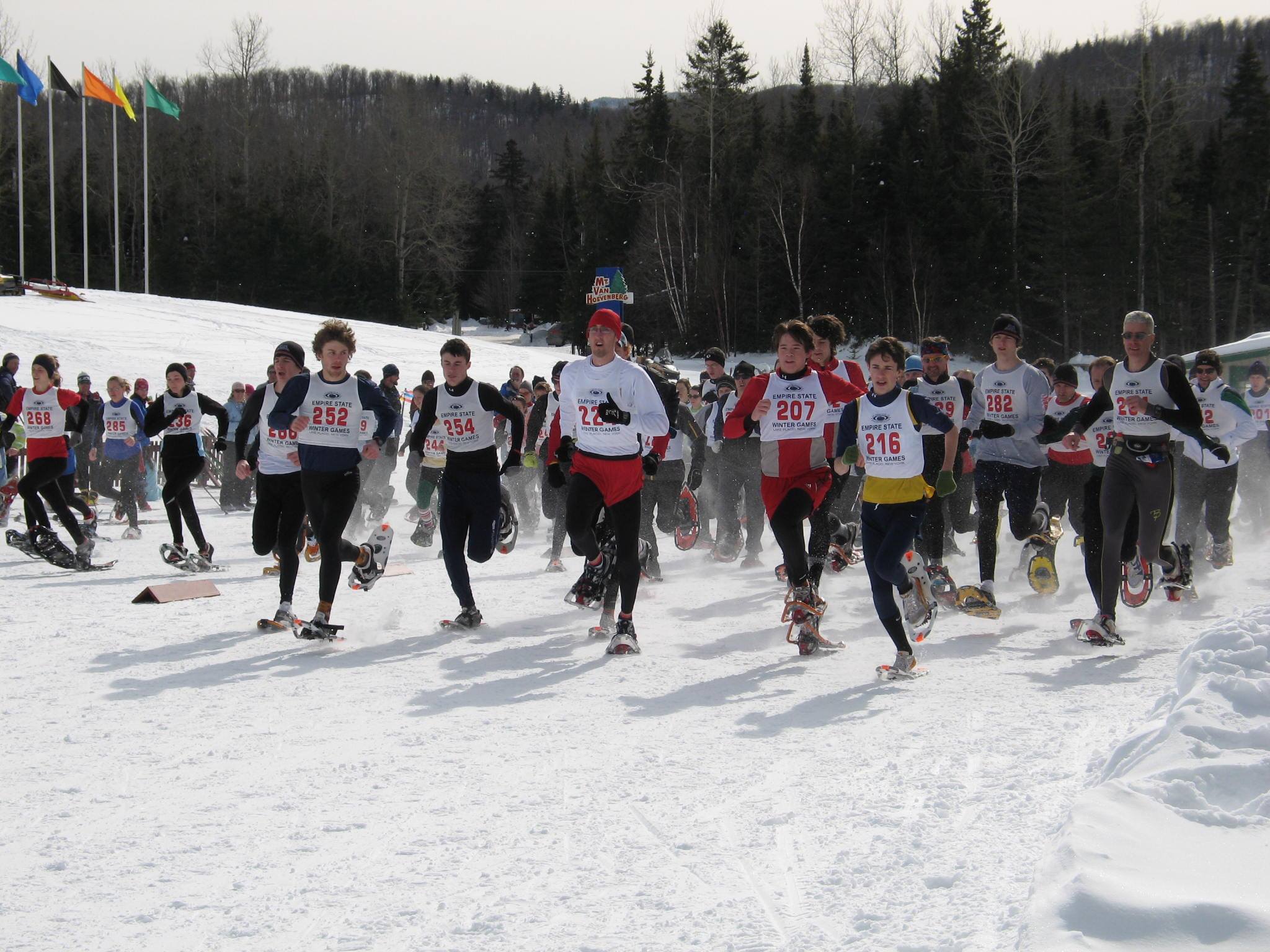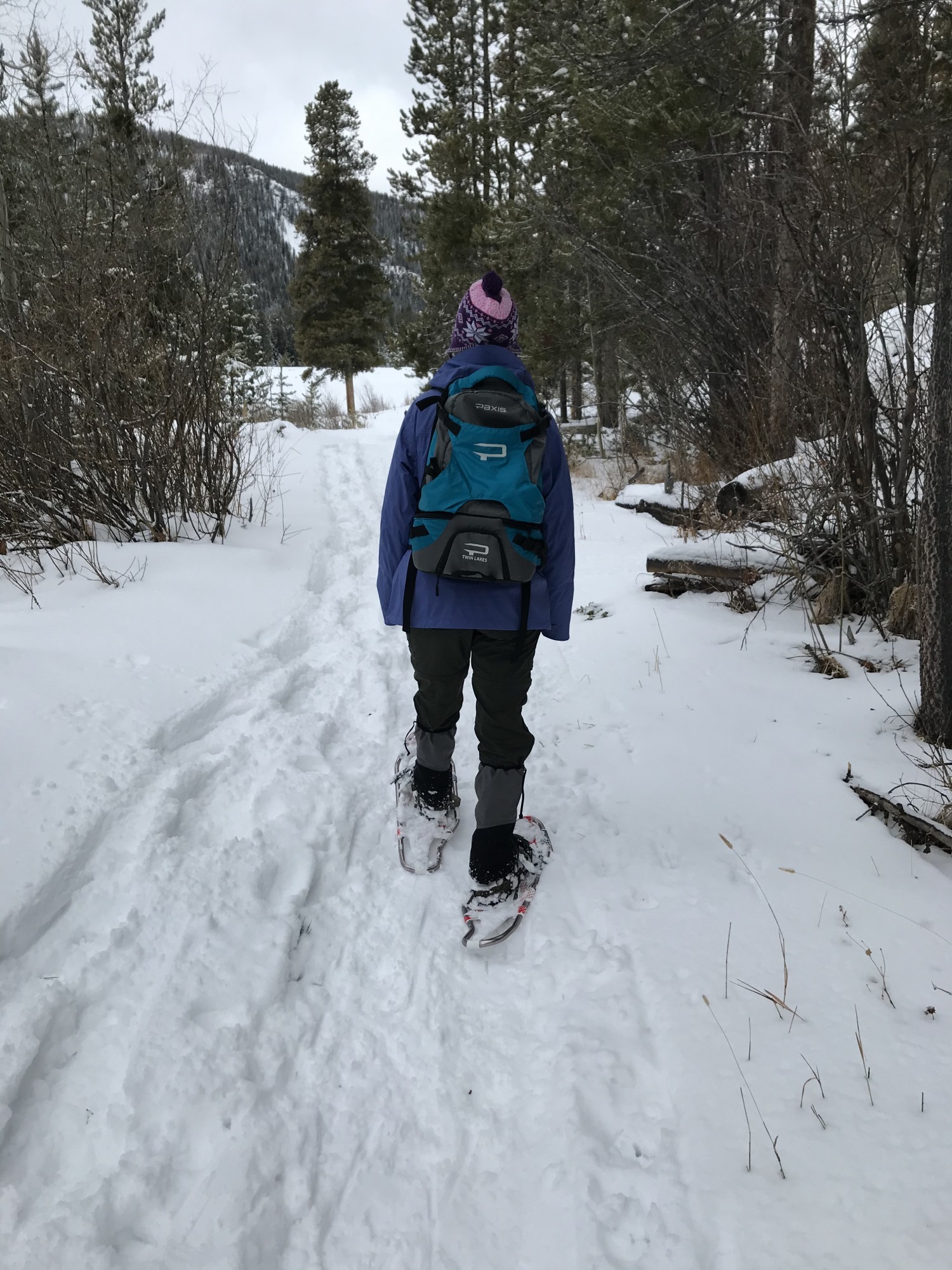As a young child in the 50s, I remember my mother putting me into a snowsuit that had pants, coat, and hood all in one piece. It was made of a stiff cotton fabric that froze like a Popsicle on a wet winter day. My arms stuck out straight making me resemble a very short scarecrow.
I had cotton mittens clipped on to the sleeves of the snowsuit and a hat with a visor and thick earflaps that gave me the appearance of a young Gomer Pile. My boots were solid black rubber and my father referred to them as “galoshes,” having pulled them over my everyday play shoes and zipped them up the center. It seemed to take forever to get dressed to go outside and play.
Today when I take my grandchildren snowshoeing, they wear a nice water resistant windproof jacket with an insulated liner and hood, a pair of polyester waterproof breathable coveralls, and a pullover cap made of polypropylene. Their gloves are also insulated and warm. Their boots have rugged rubber souls and waterproof uppers encasing a comfortable lining. When it comes to winter clothing, time has resulted in unbelievable technological changes.
In the past, wool was about the only real winter fabric that protected us from the cold because it maintained its insulation value when wet and dried fairly quickly. Although cotton was popular in the past, we now know that cotton is hazardous in the outdoors during winter since it does not insulate when wet and dries very slowly.
New today are high-tech fabrics that not only insulate and offer warmth, but they are designed for safety in winter. Buzzwords like “water resistant, windproof, waterproof and breathable, wicking capability, insulation value, and quick drying,” flood garment marketing campaigns. With fabrics such as polypropylene, moisture is wicked away from the body and the fabric either insulates when damp or dries quickly. Fleece and a variety of synthetics like polyester take the lead as a fabric designed for warmth and insulation. And they are lightweight.
GORE-TEX, and now a myriad of other brands of waterproofing fabrics helps keep people dry. And sometimes used for winter wear is wool and wool blend products. I value my 60 percent wool and 30 percent acrylic socks. I wear them year round. However, wool is not a top choice for winter activity anymore since there are now many synthetic alternatives that do a better job when it comes to insulating when damp or wet.
Layering Is The Way To Go
My main objective in teaching students about winter clothing when snowshoeing is safety, followed by comfort. I want them to keep dry and warm and regulate their body by “layering.” Layering is a system of regulating your body temperature by adding or removing clothing while involved in an outdoors aerobic activity.
Snowshoeing is an aerobic activity. When snowshoeing, you work hard, get hot, and you perspire. So by dressing in layers, you can monitor your body temperature. Open up and take off clothes when in motion, and close them up and put them back on when at rest.
Layering has been identified as three main layer types. The first layer, also called inner layer and wicking layer involves wearing a fabric that wicks moisture away from your skin, such as breathable and nonabsorbent top and bottom underwear (made of fabrics like polypropylene or other micro-fiber synthetic fabrics). The second layer, warmth layer or insulation layer would include a quick-drying synthetic insulator that will trap your body heat and still move the moisture away from you (such as fleece, polyester, acrylic and other synthetics). The third layer, weather layer or Shell layer would involve wearing a waterproof or water resistant and breathable jacket and pants, sometimes referred to as a shell (often made of nylon material).
Other layering suggestions include wearing insulating warm socks (wool, synthetic, or a blend of both) with a polypropylene or nylon sock liner. Wear a warm but breathable hat and use a hood as an outer shell. And wear warm gloves or mittens with a liner (your fingers will insulate themselves better in mittens than in gloves). Cotton is not recommended at all for winter wear.
Teaching Others About Winter Clothing
I’m surprised when I come to the topic of winter clothing in my snowshoeing classes. Many students are unaware of the concept of layering and often have not heard of the varied types of high-tech fabrics on the market today. I use handouts and overheads to explain winter clothing and layering. But the best approach in my estimation is hands-on.
One approach I use is to pack a duffle bag with a full array of winter clothing from head to foot. I take all my winter-wear out of the duffle bag as I explain what they are made of and how they tie in with layering. Other than my long-underwear, pants and shirt, I put on much of what I’m demonstrating. It becomes a fashion show of sort, presenting a wide range of clothing options for people to consider wearing when snowshoeing.
Taking this simple idea to another level would be to do a little digging through your attic or shop at a Goodwill store to find some old clothing from the 50s to the 70s. If you are fortunate enough to find a full winter wardrobe, you could have loads of fun doing a comparison. Dress up a student in the old garments and one in the new and do a comparison across time. Let the students point out the differences.
The traditional “show-and-tell” goes over well in my classes as well. I ask students to bring their own clothing that they really like. I have students talk about their particular garment and provide a product review. Information from a show-and-tell provides great ideas for others, and I too come away with a new product or two that I go looking for in the stores.
In teaching kids ages 5 to 10 about winter clothing, I play a fun game with them. I selected a child to participate as a model. When my model comes into the room wearing pants, shirt and socks, I asked the children to tell me what she/he should wear if they are to go outside to snowshoe. As kids identify an item of necessary clothing, my model would pull the item from a duffle bag and put them on. It is a fun interaction approach for kids to learn about winter apparel.
For older students, I did a cost comparison to show that you do not have to spend lots of money to get quality outdoor winter clothing. I put the information on two overheads (or you could use a flipchart). The first overhead lists winter clothes with actual costs for head, hands, top, bottom, and feet. The second overhead has the same list but with the price I actually paid for each item. My overall comparison showed a savings of more than 46 percent by shopping around and waiting for specials. I had only a couple items I paid full price, and one of them was underpants. I didn’t want to wait for a sale on polypropylene undies.
I recommend taking the subject of winter clothing seriously, since the proper cloths can save lives; or, at least they can help keep you comfortable and warm. It is very refreshing to know that when I take my four and eight year-old granddaughters out to snowshoe, that they are dressed for the occasion.






